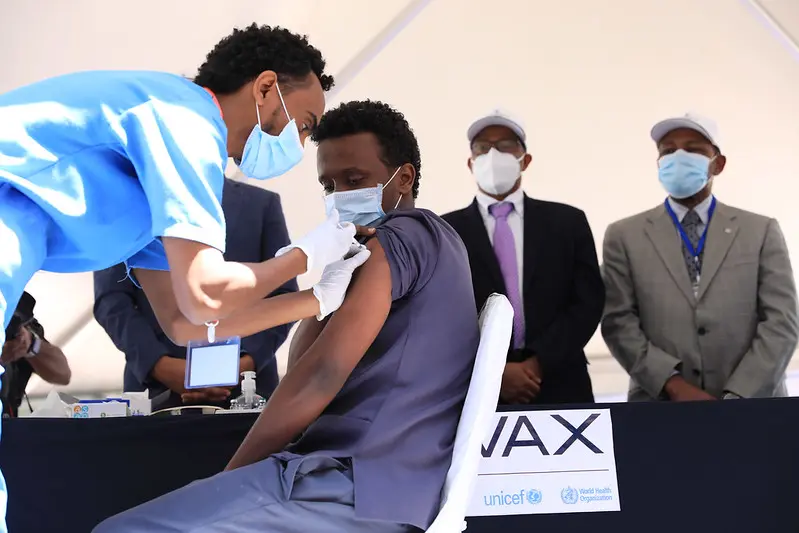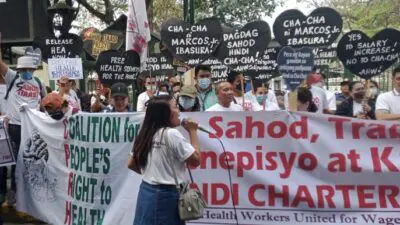‘If only COVAX had taken the monopoly breaking approach’

All over the world, governments have promoted COVAX as the magical solution to the pandemic. But while big pharma companies are making billions, COVAX is struggling to achieve its own modest ambitions. We spoke to expert Prasanna Saligram of People’s Health Movement (PHM) to learn about the role and challenges of COVAX.
What is COVAX? Why was it set up?
Historically, whenever there has been some sort of epidemic there have always been inequalities in terms of access to essential medicines and vaccines. For example, with H1N1 virus in 2009 a vaccine was developed but high-income countries (HICs) took all the vaccines. So what was thought of with COVID-19, was the need for a global mechanism to distribute the vaccines to low and middle income countries (LMICs). The main mechanism doing that is the Access to COVID-19 Tools Accelerator (ACT-A). It has four arms: one for vaccines, another for diagnostics, a third for therapeutics and the last one for health systems. The vaccine arm is called COVAX and aims to accelerate access to COVID-19 vaccines.
Who runs COVAX?
If you read the media, you will think that COVAX is an initiative led by the World Health Organisation (WHO). But actually it is not led by WHO. COVAX is a public-private partnership led by two organisations, Gavi and CEPI. Both are public-private multi-stakeholder initiatives funded and supported by the Bill & Melinda Gates Foundation. WHO and UNICEF are also in COVAX as multilateral organisations, but they do not have a seat at the high table. Although they have been excluded from the central governance mechanisms, WHO and UNICEF are seconding their staff and giving legitimacy to COVAX. But the actual showrunners remain CEPI and Gavi and the international pharma industry, that is also sitting on the governance mechanism.
What does COVAX aim to do?
COVAX set out as a global solidarity platform, but the problem is that it was proposed immediately after another initiative which was much more of a global platform, C-TAP. C-TAP is an initiative led by WHO that aims to pool technology and would have resulted in the rapid and massive manufacturing of the vaccines and other essential medical products. But because most big pharma companies are interested in retaining their profiteering, they did not want to let go of their knowledge and patents and share it with C-TAP. This is where COVAX comes in. COVAX uses a market-based approach. It steps in as a big volume purchaser to negotiate better prices for HICs and to give free vaccines to LICs for their priority population. According to the WHO, priority groups like health workers, vulnerable groups and older people make up around 20% of the population. So COVAX promised to deliver enough vaccines for 20% of the population. But, as we know, if you want to reach herd immunity to stop the spread of the disease, you need to vaccinate 70% to 80% of the population. How will we make up for the gap between 20% and 80%?
Will COVAX achieve its objectives?
We see that COVAX is really struggling. Countries like Venezuela are complaining that they have given money to COVAX but are not receiving any vaccines. So there are questions about accountability and effectiveness. COVAX was supposed to supply 2 billion doses at the end of 2021. We are in July 2021 and COVAX has hardly distributed 83 million doses. COVAX claims it has delivered to many countries around the world, but a big part has gone to the HICs that are also in the COVAX program but don’t need extra vaccines. So we see that HICs are better served than the poorer countries, which were made to believe that COVAX was going to take care of them. Instead, they are all left waiting.
What are the biggest challenges for COVAX?
The biggest problem is that it depends on charity instead of taking a solidarity approach that would break the monopolies of the big pharma companies. If only COVAX had taken the monopoly breaking approach, they would have been much more effective. There would have been many more manufacturers and maybe we would not have to ship vaccines from one continent to another. Moderna got about 8 billion of US taxpayers’ money for developing and producing its vaccine. But Moderna is also the costliest vaccine, at around 31 dollars for two doses. So a company that received enormous amounts of public money, has the highest price and COVAX is blindly paying this highest price. COVAX never said it wants to end the profiteering of Big Pharma or encourage companies to share the technology. It did none of these things. It just blindly followed market mechanisms and didn’t want to touch the profiteering model. This can only lead to bad outcomes, as we have seen with the vaccine nationalism and global vaccine apartheid.
Is COVAX the magical solution for the pandemic, as it is portrayed to be?
When social movements and activists contacted their trade and health ministers to push for a people’s vaccine, they were assured that COVAX would take care of it. But they were too complacent. Governments believed that donations for COVAX would flow in easily and that pharma companies would wait in line to deliver their vaccines to COVAX. None of that happened. The donations did not come at the level they expected, so they could not procure enough doses. Secondly, because companies like Pfizer and Moderna are busy catering to HICs, they have no incentive to commit supplies to COVAX. Even Astra Zeneca is not delivering as promised. In this era of vaccine nationalism and vaccine profiteering, COVAX has had no chance even to honor its own commitments. So charity only goes that far. What we need instead is an approach based on global solidarity, accountability and human rights.
What does PHM propose?
PHM’s proposition is threefold. The first point is that the TRIPS waiver has to be adopted immediately. Intellectual property barriers should be removed so we can rapidly scale up manufacturing. Then we need to strengthen C-TAP. It was conceived on a voluntary basis, but should be stronger to facilitate real technology transfer. Finally, why not invest in public research and development? If you look at the research and development cycle of any technology, vaccine or medicine, the basic molecular technology is always developed at public universities. Only at a later stage, during clinical trials for example, we see more involvement of the private sector. So if plenty of public money is spent and if the basic technologies are developed in the public sector, why not promote public research and development more? Of course, with PHM we are also looking at building the capacities for local manufacturing so we can rapidly scale up production worldwide. If not for this pandemic, then at least for the next one.

